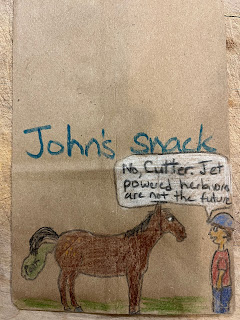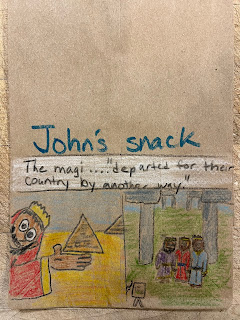All the animals arrived safely in Minnesota, with the exception of the two Cuban tree frogs we captured on our old farm in Florida and made into pets (they are invasive in Florida). They succumbed to the cold despite our precautions.
The days were hot and muggy when we left Florida on April 10th. The two horses had been professionally hauled up north several days before and were at a boarding barn adjusting to the change in their summer coats (we sent along their blankets). We left with Maggie the Shetland Pony, Tony the mini donkey, Fiona the Dexter cow, and three pet goats (Nancy, Lisa, and Leslie) all in the trailer. Our first stop was in central Georgia. Our trailer has open bars on the sides for ventilation and a canvas top. Perfect for hauling in the heat. The cow and goats have been sharing a pasture for six months so they have bonded.
Inside the truck were four house cats in carriers, plus one barn cat in a carrier, two dogs in the backseat, two rabbits, and the two frogs in a plastic container with appropriate holes, damp paper towels, and a few cricket snacks.
Inside my husband’s electric car was a pet blue death feigning beetle in a small cage with a little fruit for food. One of the reasons for stopping so soon was to give the animals a break and because of the range of the electric car.
The terrain was very similar to northern Florida as we headed up I-75. Just before crossing our first state line into Georgia, we were required to stop and present the health certificates to a Florida agriculture inspector. All of the paperwork was organized and easy to present. It only took about five minutes. The types of trees and plants stayed about the same, but the soil changed a little as we neared Perry, Georgia. There were more hills and we could see some of the rich red clay the area is known for. The weather was very similar to Florida and didn’t bother the animals in their summer coats.
We found an RV park with horse stalls for the cow, goats, pony and donkey. They were a little surprised we wanted stalls for the cow and goats (they shared one), but they accommodated us nicely. Most of the dogs and cats went to be boarded at a kennel for the night. We dropped the small animals off first bouncing down a bumpy rural driveway. We slowly passed a herd of cattle that Fiona communicated with extensively. Perhaps they were comparing forage preferences. With such an open trailer, Fiona could enjoy the view and check out the neighbor’s bull while we dropped off the dogs and cats. It was quite a conversation.
Our older dog, elderly cat, and a cat that needs medication, stayed with us in the pet friendly hotel. We managed to bring the rabbits inside with their travel cage. The man at the desk didn’t say a word when we passed by.
The next morning, we left the hotel to round up the animals and hit the road again. We picked up the dogs and cats first. Rocky and Tiger didn’t eat because they were too stressed that first night. Ralph, the barn cat finished his food. We brought their own food so things would be more familiar, but traveling with cats can be difficult. When we arrived to pick up the large animals, they greeted us enthusiastically. All was well, but Fiona must have bumped against the sliding stall door hard because it was pushed outside the track. We had cleaned out the trailer the night before so the clean, dry trailer awaited them the next morning. Fresh hay in nets was available for all.
The trailer has two compartments. We started out with the two largest animals (cow and pony) tied to each side in the larger back portion, and the goats with the mini donkey loose in the front portion, but for Day 2, we paired the cow with he goats in the back and the pony and the donkey in the front. That worked out much better. The only downside to that first stop in Georgia was that I accidentally left all the grooming equipment for the horses, cow, and goats behind at the RV barn.









































